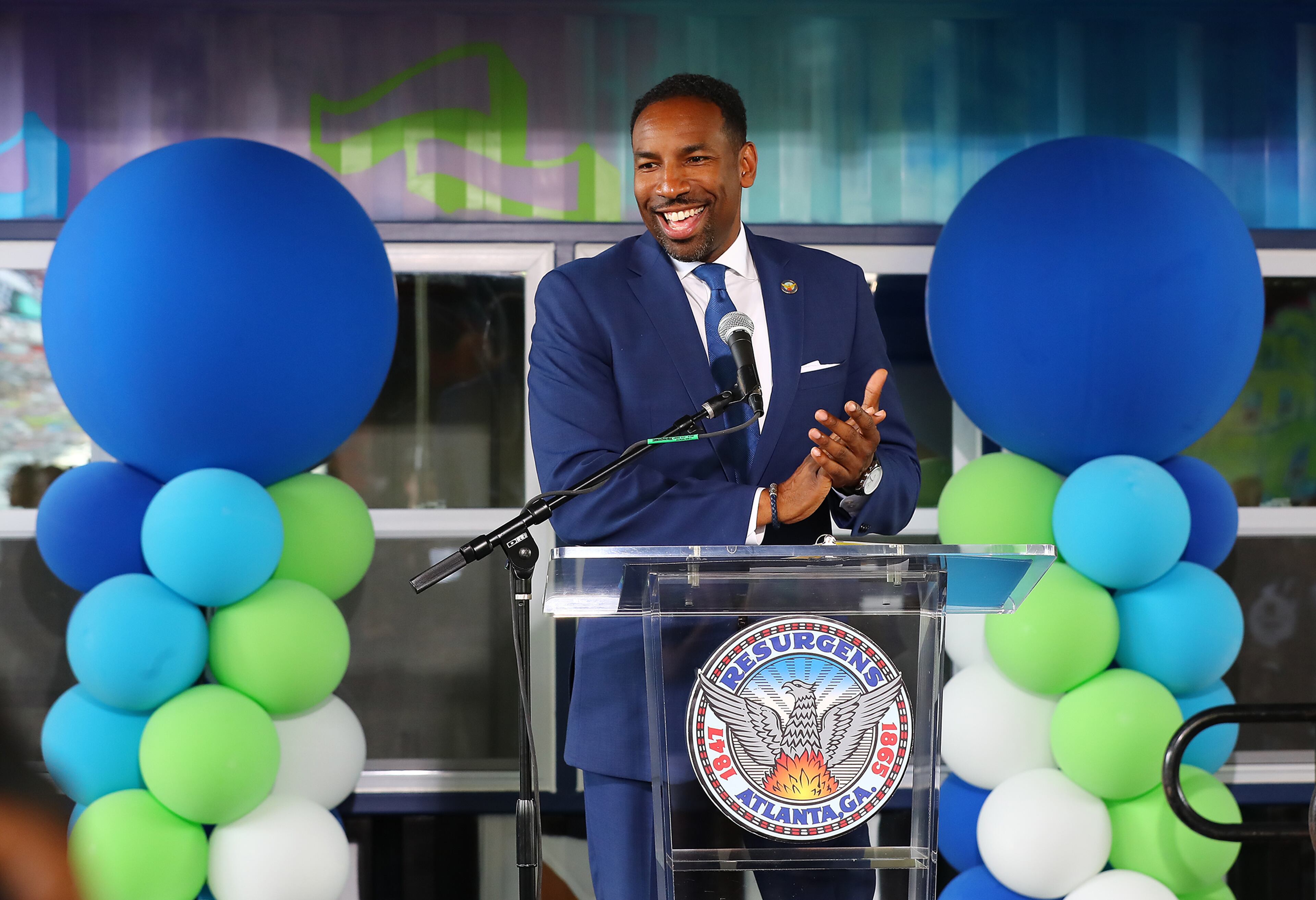OPINION: Cloudy MARTA stations a way to quiet Beltline rail backers

It’s always reassuring to see a politician accept and express reality.
Such was the case last week when Atlanta Mayor Andre Dickens hinted that he’s leaning toward dropping a cold, wet blanket over the boondoggle that is the Eastside Beltline Rail.
Once upon a time, the mayor was steadfast in his intention to spend $230 million (probably more) to extend the downtown streetcar up the Beltline to the Ponce City Market. The two-mile-plus extension would be the first chunk of light rail around the 22-mile circle.
For years, the idea blithely existed in the ether without real public debate. Renditions of light rail gliding alongside the Beltline trail with green grass along the tracks looked inviting. Plus, the people in the drawings always were smiling. What’s not to like?
Well, there are problems. The Beltline has been wildly successful without rail, and the heavy construction needed to install it would totally disrupt life, and business, along the path. Plus, spending $230 million-plus of Atlanta’s money (there’d likely be no federal funding here) on a not-yet vetted ridership model would be foolhardy. As I’ve said, why spend a quarter billion bucks to screw up a good thing.

Late last month, the mayor used his State of the City address to announce he wanted to build an infill station on MARTA’s heavy rail line at Murphy Crossing, a 20-acre redevelopment project in south Atlanta that would also hook up with the Beltline.
Hmmmm, I thought. Might make sense.
Two weeks later, he announced three more new stations — one near Bankhead, one at Krog Street and another in south Buckhead, distributed in classic Atlanta fashion, north-south, east-west, Black-white.
Nah, I figured. In 2018, those four stations were expected to cost $350 million. (However, that same MARTA study estimated the now-$230 million light rail line would only cost $128 million). So you know the four stations could now cost $700 million — or even $1 billion as a Beltline Rail Now! study estimated in 2021.
My Spidey Sense told me Dickens was pulling this big splashy plan out of his ear in an attempt to assuage the fears of rail fans as he slowly killed the Eastside rail plan.
A channel 46 TV reporter caught up with Dickens. He said the new stations could be funded by the “More MARTA” half-cent sales tax and “public-private partnerships,” which is always a bit squishy. The More MARTA fund has been continuously scaled back because the anticipated $2.7 billion over 40 years just doesn’t stretch like it used to.

As to the Beltline rail, the mayor, who’s been inching away from it for months, said the plan is still being studied.
“Once we come out with that, we’ll make sure the public knows, and we can make a clear decision on do we want it to be on rails? Do we want it to be on rubber tires? Do we want small pods? Or do we want to leave this as a walking trail?” he said.
One could almost hear a mayoral aide in the background quietly whistling Taps for the plan.
The mayor’s office, in a statement to me, did not directly address light rail: “The city’s transportation landscape is dynamic, and it is only good government to ensure we keep pace with the evolution of the diverse growth and immediate needs of its neighborhoods. Further, he has never wavered on his pursuit of sensible transit on the BeltLine.”
The mayor’s office said their boss must “ensure investments are strategically and equitably deployed to increase ridership on MARTA’s heavy rail network and bus system fostering a more connected and unified Atlanta.”
They said estimates on the massive costs of the new stations “are immaterial” because there will be public-private projects to help fund them “and details will be worked out with community input.”
So, I read that as “Still winging it.”

I called Matthew Garbett, co-founder ThreadATL, a local blog covering urban and transit issues. We disagree on the Beltline rail but agree on the hypothesis that Dickens is slowly smothering the Beltline rail plan and wants people to look away at something else while he does so. The new stations, Garbett said, came out of the blue. He called around to insiders afterward, and no one had heard of it until the announcement.
“This is weird; in all my years of doing this I’ve never heard of a $1.5 billion announcement where no one knew what was going on,” he said. “I think Andre caved to the anti-Beltline rail people. It’ll come out later they don’t have money for the four stations. He’s looking at this as a way to appease everyone.”
Joseph Hacker, a transportation planning expert at Georgia State University, didn’t wait to let me finish my question about the Beltline rail.
“It ain’t gonna get built,” he said. “It just doesn’t make sense at this point.”
“What the Beltline does is not what they thought the Beltline would do, it organizes development around the center of Atlanta” without light rail ever being part of it, he said. “I don’t see that rail makes it better.” In fact, he said, construction disruptions could kill businesses.
“So many people are wedded to Ryan Gravel’s master’s thesis, and that’s what it is, a master’s thesis,” Hacker said, referring to the former Georgia Tech student whose vision became the basis for the Beltline. “People are invested in it, but it has not been means tested or reality tested.”
It’s just heartening to see reality is sinking in on the mayor.



